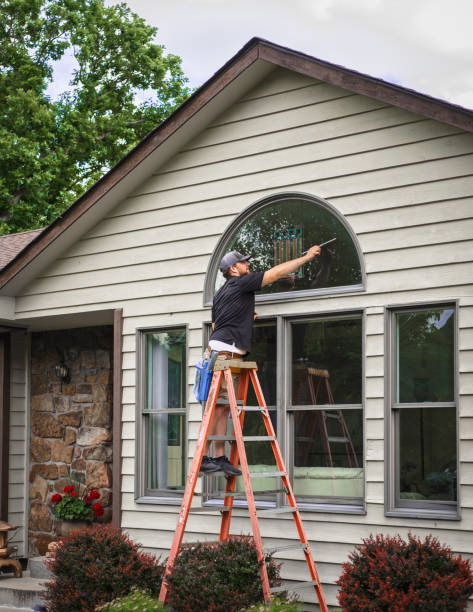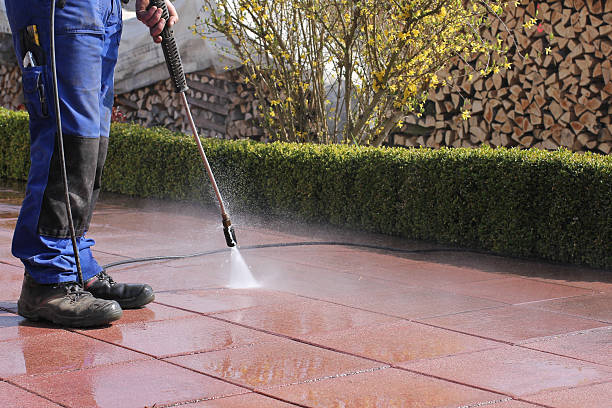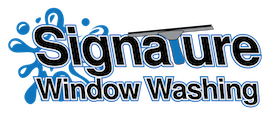Welcome to the world of soft washing! If you’re someone who’s always been curious about what soft washing is and how it works, you’ve come to the right place.
Softwashing is a cleaning method that’s gaining popularity due to its effectiveness in zzremoving dirt, grime, and other stains from surfaces without causing damage. Softwashing is a gentle alternative to pressure washing, which can often be too harsh for certain surfaces.
It involves the use of low-pressure water and specially formulated chemical solutions to clean surfaces thoroughly. In this article, we’ll explore the history and origins of softwashing, the process and techniques involved, the equipment and tools used, the chemical solutions used, and the benefits and advantages of this method. We’ll also compare softwashing to pressure washing, discuss safety and precautions to take when softwashing, and address environmental concerns related to this cleaning method.
So, let’s dive in!
What is Softwashing?
 Looking to rid your home of dirt and grime without damaging the surface? Softwashing is the solution for you!
Looking to rid your home of dirt and grime without damaging the surface? Softwashing is the solution for you!
Softwashing is a cleaning technique that uses low pressure and specialized chemicals to clean surfaces. Unlike pressure washing, which uses high pressure water to clean surfaces, softwashing uses a gentle, yet effective approach that is safe for delicate surfaces such as roofs, sidings, and stuccos.
Softwashing is becoming increasingly popular as people realize the benefits of this cleaning technique. Unlike pressure washing, which can damage surfaces and strip away protective coatings, softwashing is gentle and won’t cause any harm to your property.
Additionally, softwashing cleaning services are more thorough and long-lasting as the specialized chemicals used in softwashing will kill any mold, algae, or mildew that’s growing on your surfaces, leaving your property looking clean and fresh for longer periods of time.
History and Origins
You probably didn’t know this, but the origins of softwashing can be traced back to the early days of pressure washing.
In the past, people used high-pressure water to clean surfaces. However, this method often caused damage to delicate surfaces, such as roofs, walls, and windows.
As a result, some cleaning professionals started experimenting with a gentler approach that would still be effective in removing dirt and grime. This is how softwashing was born.
The history of this cleaning technique is relatively recent, as it has only been around for a few decades. However, it has quickly gained popularity among homeowners and business owners who want a safe and effective way to clean their properties.
Today, softwashing is a widely recognized method of cleaning that is used across various industries.
Process and Techniques
To get started with the process and techniques, imagine a gentle spray of water mixed with cleaning solution being applied to a surface, effectively removing dirt and grime without causing damage. This is the essence of softwashing, a process used for cleaning the exterior of a building, roof, or other outdoor surfaces.
The technique involves a low-pressure spray of water and cleaning agents, which is applied to the surface being cleaned. Softwashing is an effective way to remove stains and build-up on a variety of surfaces, from concrete and brick to shingles and siding.
The process is particularly useful for removing algae, mold, and mildew, which can cause damage if left unchecked. Softwashing is also an eco-friendly alternative to pressure washing, which can be damaging to some surfaces. By using a gentle spray and carefully selected cleaning agents, softwashing can effectively clean surfaces without causing harm.
Equipment and Tools
The equipment and tools needed for effective softwashing are crucial to achieve a successful cleaning service.
To begin with, a low-pressure sprayer is necessary to apply the cleaning solution gently and precisely onto surfaces. A high-pressure washer can damage delicate surfaces, and that’s why softwashing requires low-pressure equipment. This method is effective in removing dirt, grime, and other contaminants without causing any harm to the surface.
Another essential tool for softwashing is the cleaning solution. The solution should be selected based on the type of surface being cleaned and the level of dirt and grime. A professional softwashing service provider uses eco-friendly and biodegradable cleaning solutions that are safe for the environment and humans.
Lastly, safety gear such as gloves, goggles, and masks are necessary to protect the cleaning service provider and the property owner from inhaling hazardous chemicals or getting in contact with the cleaning solution.
The right equipment and tools are essential for softwashing. You can’t achieve an effective cleaning service without the right tools. A low-pressure sprayer, cleaning solution, and safety gear are the most important equipment that should be utilized for a successful softwashing service. Ensure that you hire a professional softwashing service provider who uses eco-friendly and biodegradable cleaning solutions to protect the environment and your property.
Chemical Solutions
Using eco-friendly and biodegradable chemical solutions is an essential part of the softwashing process. Unlike traditional pressure washing, softwashing relies on chemical solutions to break down dirt, grime, and other debris from surfaces without causing damage.
These chemical solutions are specifically designed to target different types of stains and buildup, making them an effective solution for a wide range of cleaning needs. One of the significant advantages of using chemical solutions for softwashing is their ability to penetrate surfaces deeply. This allows the solution to break down even the most stubborn stains, without causing any damage to the surface.
Additionally, eco-friendly solutions are safe for the environment and do not contain any harmful chemicals that could harm plants or animals. In short, using effective and eco-friendly chemical solutions is an essential part of the softwashing process that ensures surfaces are thoroughly cleaned without causing any harm to the environment.
Applications and Uses
 You might be wondering where you can apply and benefit from eco-friendly chemical solutions in your cleaning routine. The answer is softwashing! Softwashing is a cleaning method that uses low-pressure water and specialized chemical solutions to remove dirt, grime, and other contaminants from various surfaces. It’s a safe and effective alternative to traditional pressure washing, which can cause damage to delicate surfaces like roofs and siding.
You might be wondering where you can apply and benefit from eco-friendly chemical solutions in your cleaning routine. The answer is softwashing! Softwashing is a cleaning method that uses low-pressure water and specialized chemical solutions to remove dirt, grime, and other contaminants from various surfaces. It’s a safe and effective alternative to traditional pressure washing, which can cause damage to delicate surfaces like roofs and siding.
One of the main applications of softwashing is for roof cleaning. Softwashing can effectively remove algae, moss, and other growths from your roof without causing any damage. This not only improves the appearance of your home, but it also helps to prolong the life of your roof.
Siding is another surface that can benefit from softwashing. Softwashing can remove dirt, mildew, and other stains from your siding, leaving it looking clean and refreshed. By using eco-friendly chemical solutions, you can achieve a deep clean without harming the environment or your home.
Benefits and Advantages
Employing eco-friendly chemical solutions in your cleaning routine can offer a multitude of benefits and advantages when it comes to softwashing. Softwashing is a gentle cleaning method that uses low-pressure water and specialized cleaning solutions to clean surfaces.
One of the main benefits of softwashing is that it’s gentle on surfaces, making it a great option for cleaning delicate materials such as roofs, siding, and even outdoor furniture. Unlike high-pressure washing, softwashing doesn’t damage the surface being cleaned, which can save you money on repair costs in the long run.
Another advantage of softwashing is that it’s effective in removing dirt, grime, and other unsightly stains. The specialized cleaning solutions used in softwashing are designed to break down and remove even the toughest stains, leaving your surfaces looking clean and refreshed.
Additionally, softwashing is a more eco-friendly option compared to traditional pressure washing, as it uses less water and chemical solutions.
Overall, softwashing is a great way to keep your outdoor surfaces looking clean and well-maintained while also being gentle on the environment.
Comparison to Pressure Washing
When it comes to cleaning outdoor surfaces, it’s important to consider the difference between softwashing and traditional pressure washing.
While pressure washing relies on the power of high-pressure water to clean surfaces, softwashing uses a gentler method that involves applying a cleaning solution to surfaces and then rinsing it off with low-pressure water.
One of the main advantages of softwashing over pressure washing is that it’s much gentler on surfaces. Pressure washing can be effective at removing stubborn stains and dirt, but it can also damage surfaces and strip away paint or other finishes.
Softwashing, on the other hand, is a much safer method for cleaning surfaces like roofs, siding, and decks. It’s also more effective at removing mildew and algae, which can be difficult to remove with pressure washing alone.
If you’re looking for a safe and effective way to clean your outdoor surfaces, softwashing is definitely worth considering.
Safety and Precautions
 For a safe and worry-free cleaning experience, it’s important to take proper precautions and prioritize safety when performing outdoor cleaning tasks.
For a safe and worry-free cleaning experience, it’s important to take proper precautions and prioritize safety when performing outdoor cleaning tasks.
When softwashing, make sure to wear protective gear such as gloves and goggles to avoid any harmful chemicals from coming into contact with your skin or eyes. It’s also important to read the labels of the cleaning products being used and follow their instructions carefully to ensure proper usage and avoid any accidents.
In addition to personal safety, it’s important to take precautions to protect the surfaces being cleaned. Softwashing uses low pressure and specialized cleaning products to safely and effectively clean surfaces without causing damage. However, it’s important to test a small area before cleaning the entire surface to ensure the cleaning solution and pressure won’t cause any damage.
If you’re unsure about the safety of a particular surface, it’s best to consult with a professional softwashing team who can provide expert guidance and ensure a safe and effective cleaning experience.
Environmental Concerns
To ensure that you’re doing your part in protecting the environment, it’s important to be mindful of the cleaning products you’re using and how they may impact the surrounding ecosystem.
Softwashing is a cleaning method that uses low-pressure water and specialized cleaning solutions to remove dirt, grime, and other types of buildup from various surfaces. While this technique is effective in cleaning surfaces, it’s important to note that the cleaning solutions used in softwashing may pose environmental concerns.
The cleaning solutions used in softwashing can contain chemicals that are harmful to aquatic life and can affect water quality. When washing surfaces near bodies of water, it’s important to use eco-friendly cleaning solutions to prevent any contaminants from entering the water.
Additionally, it’s important to use proper drainage techniques to prevent any runoff from entering nearby water sources. By being mindful of the environmental concerns associated with softwashing, you can ensure that your cleaning practices are safe and sustainable.
Conclusion
 So there you have it, now you know what softwashing is and how it differs from pressure washing.
So there you have it, now you know what softwashing is and how it differs from pressure washing.
With soft washing, you can get a deep clean without damaging your surfaces or surrounding environment. The process and techniques used make it a safer and more effective option for cleaning various surfaces.
Not only is softwashing better for your home or business, but it’s also better for the planet. The use of eco-friendly chemical solutions and the reduction of water waste make it a more sustainable option.
So next time you need to clean your property, consider softwashing as a safe, effective, and environmentally conscious solution.

Recent Comments